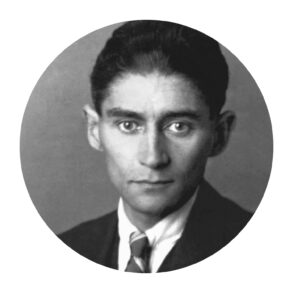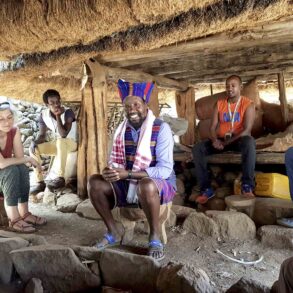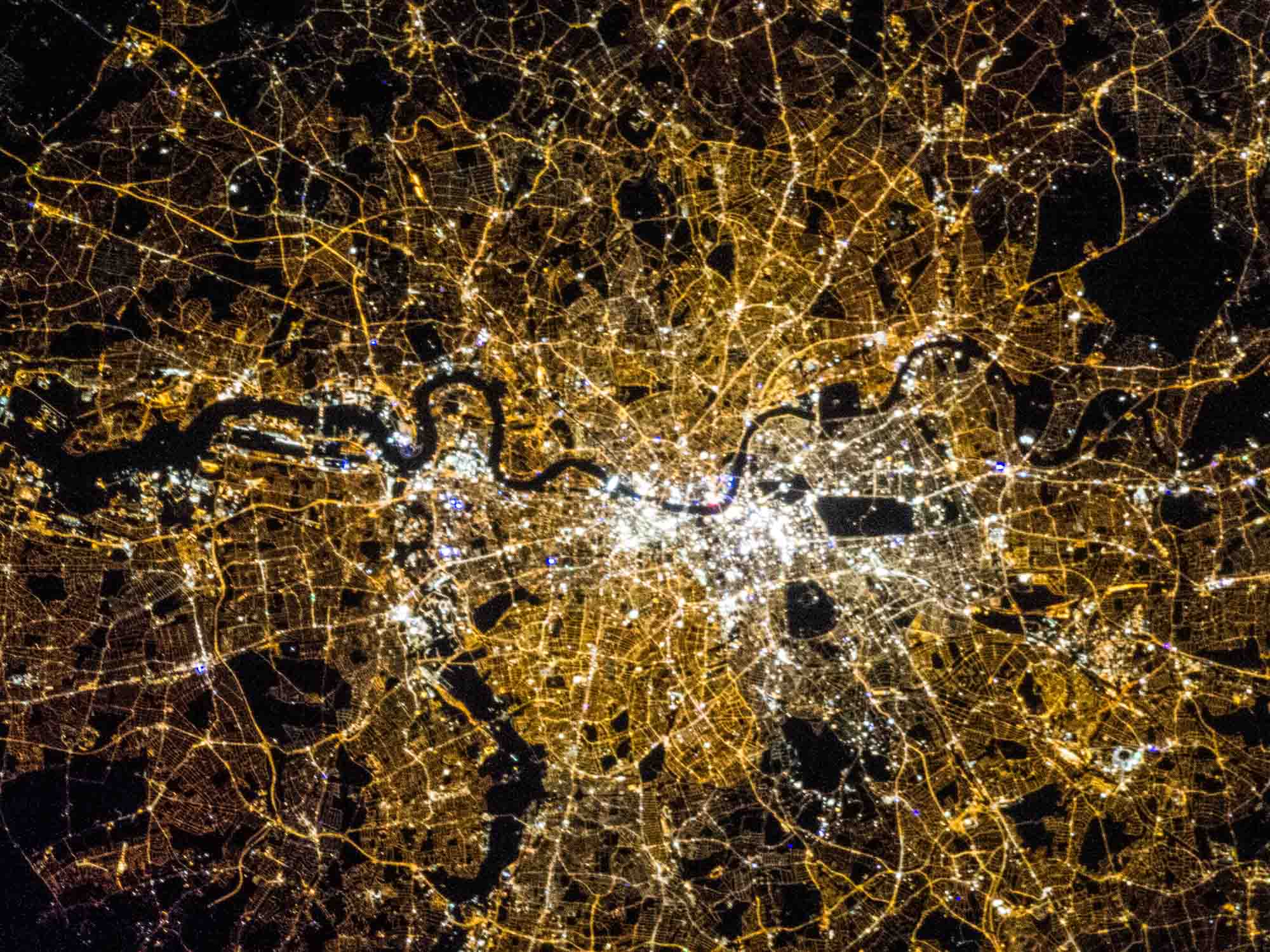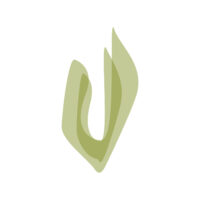Building a relationship with anything new requires curiosity and a willingness to experiment – whether it’s with a person or a novel technological tool. In this piece, American Anthroposophical Elder Siegfried Finser tells the tale of his journey into the wild, wild west of NFTs.
It was a matter of synchronicity. Just as I happened to rediscover tubes of my Grumbacher water paint, brushes, and paper, the New York Times ran a story about ‹NFTs› (non-fungible tokens). I rarely buy newspapers, but Singsong, my canary, needed fresh paper for lining the bottom of his cage. I knew the cheapest paper was in value packs and other advertisements, but Singsong is an aristocrat and deserves something better, so I splurged on the New York Times. And there it was!
A prominent artist had painted several thousand simple pictures and offered them online for a fixed price. He gave his ardent collectors the choice of having the real painting or the virtual representation, known as an NFT. To his surprise and mine, many buyers preferred the virtual version and purchased them at the same price. After all, the virtual one required no physical space for hanging, special storage to maintain its quality, or concern about ownership and security. These, it turns out, are some of the many benefits of NFTs and the underlying record-keeping system, called blockchain technology. The most well-known blockchain for such transactions is the Ethereum network, which uses the cryptocurrency, Ether. In overly simplified terms, every transaction is recorded and distributed across many computers spread around the world, without relying on a concentrated set of institutions. In many ways, this began to seem like the common person’s answer to rising distrust of large Wall Street banks after the great financial crisis and corrupt politicians around the world.
I was astounded by this revelation. Why would anyone pay for nothing when they could, for the same price, have something. It turned all my thoughts about buying and selling upside down. Occult Science, a book by Rudolf Steiner, helped provide some insights. I had carefully studied all the phases of that evolutionary story and accepted that our universe really could, at the beginning, be nothing and reach the present stage of being something. I had rejected the claim of some scientists that there is always something, no beginning is possible; that matter is eternal and the real God.
So going from nothing physical, only virtual to almost fully physical seemed like a creditable imagination of evolution. Is this clumsy early experimentation with virtuality humanity’s puny struggle to become involved in what the world will be like in the next evolutionary phase of the earth? Will what we create virtually today become the new reality of the very distant future? Are we not destined to eventually become co-creators with the other hierarchies of spiritual beings? Why should we stand by while everyone else is shaping and qualitatively inputting their ideas, feelings, and creative activity into the next world which we will have to live in?
This article is the story of one man’s journey into the unknown world in which cryptocurrency is considered a new reality and digital belongings are considered equally valuable, and in some cases more valuable, than physical. There are multitudes of intelligent people who prove it by shifting in and out of it at will, like miners disappearing into a virtual mine and re-emerging miraculously with real gold. Is this the 21st century version of that other gold rush in early America?
As a student of Anthroposophy, how should I position myself in this electric, tumultuous current of activity? It may be bad, even evil, or it may be good and an enabler of progress. It may be real, or it may be fake. It could be permanent or temporary… a fad. It might be a manipulated plot by a few or the start of a social movement enhancing the freedom and well-being of the proverbial ‹everyman!›
One person I consulted described the crypto world as the new ‹wild, wild west.› Currencies appear and disappear at the speed of light. Virtual platforms, exchanges, and wallets grow and die even faster. For some time during covid, blockchains seemed to multiply at a greater rate than rodents. Fortunes are made and lost, just like the Ol’ West of our country. Laws and regulatory controls are lagging far behind in effectiveness, and some seem to like it that way. In virtuality, we evidently have found the one non-place where we make the customs as we move along.
I felt strongly that we, those connected to the world of Anthroposophy, had to be at the table in some way, even if drastically outnumbered. For once, those of us in devoted service to the being of Michael, an archangel and time spirit according to Rudolf Steiner, should be involved early rather than later when everything is set in concrete. Technology is here to stay. Once we as humans know something, we can’t un-know it. Besides, what would we do today if Rudolf Steiner had not used the printing press?
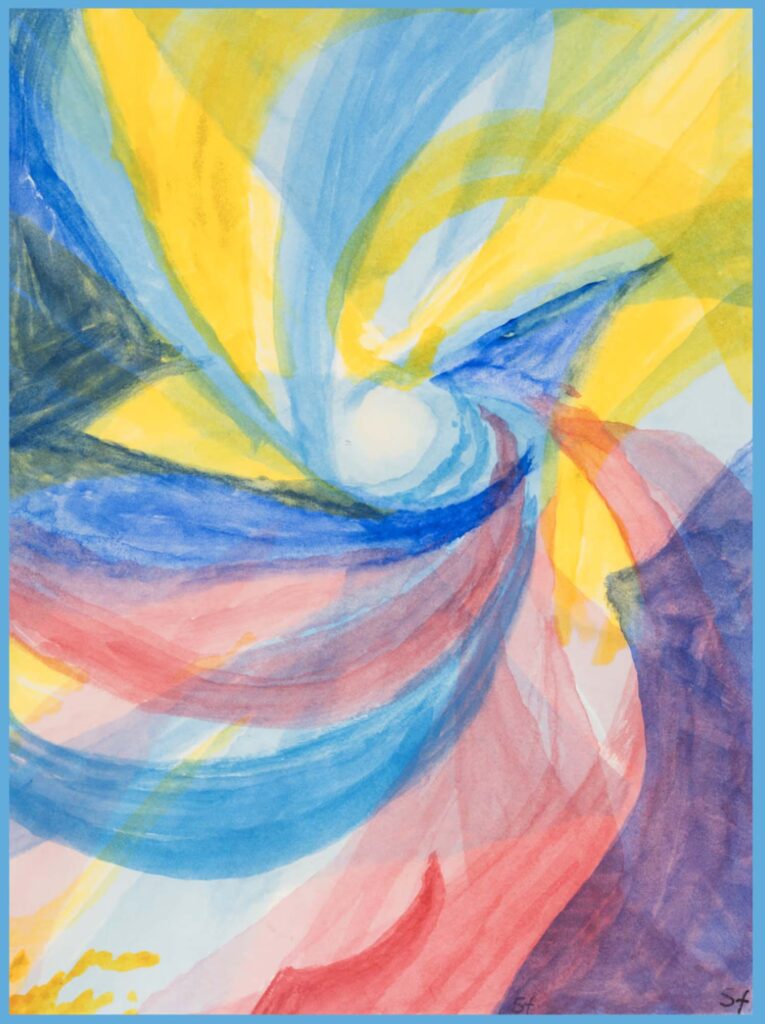
Almost a year ago, I began to look for kindred spirits who were unafraid to tangle with the unknown and who knew more about this world than I did. Gradually, as though somewhat out of the hidden crevices of Anthroposophy, they emerged one at a time. Then there were eight of us meeting virtually in different constellations every Sunday in a virtual room on Zoom.
I do not mention their names because I do not have their permission to do so. Nor would they necessarily agree with everything in this story. It is very much my story and each of us would certainly tell it differently.
These Human Beings
Looking back, I am in awe of the amazing individualities that climbed in and out of the ship we were building while the movement, the wind, the currents, the… everything kept changing and shifting. It is like they were all in the water, dipping, and diving in among the waves, calling to me… «Come on in. The ship is no longer the place to be. It’s warm, generous, and alive in here.»
While I was trying to find the ladder or a slide, anything to get down safely they cried, «Jump, you’ve got to jump. You’ll never know anything until you’re in because it all changes when you are in it. Stop planning! Stop knowing it all! Stop wanting to be safe! It will all be different anyway by the time you get here.»
They were all so far ahead of me, already so much more at home in virtuality. I know now that I was a drag, struggling to understand and learn what to do with all I was hearing and learning from them.
Early Decisions
The question of motive surfaced in a variety of ways. Many of the existing NFTs exhibited values and qualities none of us appreciated. Some of the most garish examples turned out to be quite financially successful. They reflected the tastes of human beings at every level of education and class and represented hugely diverse realms of experience and preferences. And so they should! It is so designed as to provide a truthful platform for all the diverse current and future qualities of mankind.
Although progress was tumultuous, a few decisions fell into place relatively early. Our focus for this project would be on the fruits of Anthroposophical endeavors. NFTs were not the place to offer philosophy, idealism, or complex thoughts, although some soundbites might be useful. Western culture tended toward ‹show-me-ism.› A US corporate executive claimed that we generally value ‹whatever works!› It seemed appropriate for us, therefore, to focus on the fruits of Anthroposophy, and eventually on its craft and art style for young and old. Most of us admired the Waldorf school culture as the source of this highly practical and deeply spiritual fountain of artistic output. The Holiday Fairs of many schools rose as a kind of inspirational model for the project.
Another insight for us was that NFTs are not what many of us define as art; they are often imitations of art, like posters or postcards. We would be commercializing imitations, not the art. In a similar way to how music, movies, books, and poetry are now overwhelmingly consumed through their digital forms. This seems to be an important differentiator for purists. Certainly, these digital forms of art are still art, but it requires imagination and a sense of open-mindedness to expand our definitions of art.
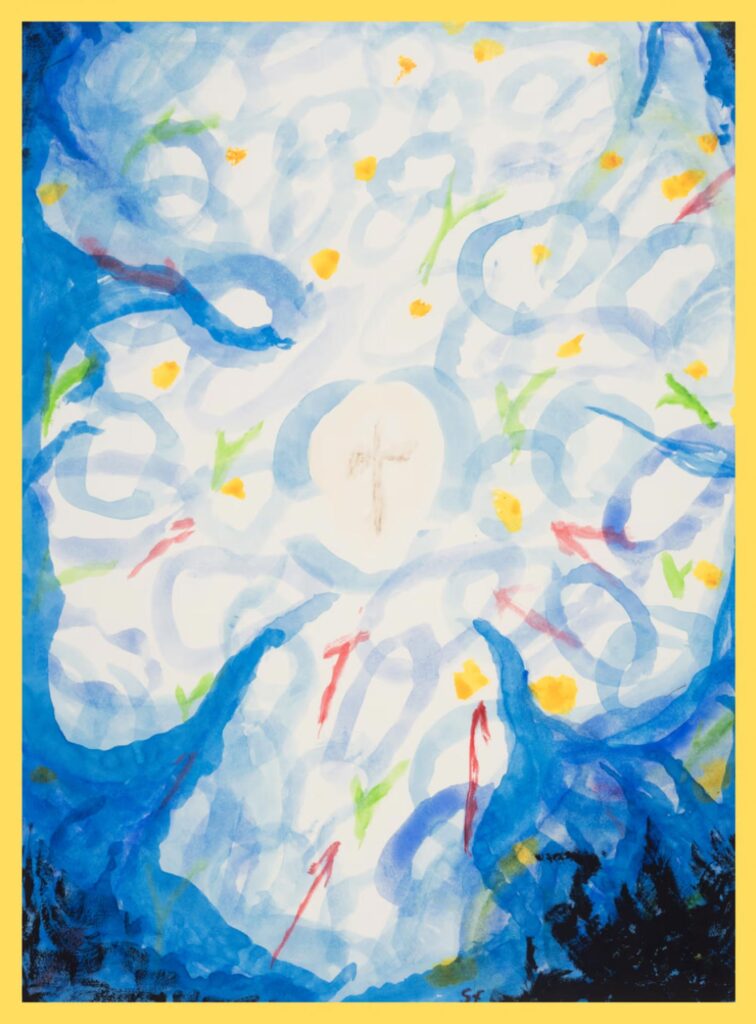
That brought us inevitably to the many questions around profit and money and very strongly into the issue of risk! Our motives gradually crystallized into clarity. We were working together to bring something about which is intended to provide long-term support for the Anthroposophical movement with special attention to the Waldorf movement. The verb ‹support› was viewed as many-faceted including financial, but also increased visibility, enhanced cultural understanding, and true inclusivity.
The dream was that we would create a virtual community of stores or fairs that featured NFT’s minted by anyone within the Anthroposophical movement for viewing, donating, selling, and sharing of potential profit with the charitable entities selected by the parties involved in each transaction. That was the dream. Spirit Matters, a charitable organization created by RSF Social Finance to support Anthroposophical initiatives, provided support during the initial research phase. They also were able to receive some welcome gifts on behalf of the group experimenting with various platforms and approaches.
For eight months, we carefully investigated a variety of blockchain platforms, exchanges, and wallet options. Individuals suggested an abundant number of technologies and organizations to consider. None of us dared to recommend a particular course of action. Each of us couched our suggestions in phrases like, «you might try this one,» or «have you considered this?» Amongst us there was quite an abundance of knowledge and experience with Opensea, Ethereum, Solana, Binance, Near, Mintbase, Coinbase, Moonpay, and even Shopify… The list is endless and exhausting.
I eventually admired a platform that would allow us to plunge straight into creating NFTs. Any Anthroposophical initiative could add its own fair to the community of fairs. It could have a multitude of charitable options to support. Each artist creator of an NFT could receive forever royalties and charitable entities could also be listed as recipients for the lifetime of the item, meaning that every time the art was transferred or sold a portion of the sale price would go to the designated wallets. Most important of all, NO CODING WAS REQUIRED! I had been hoping to find a coder who would be willing to code what we wanted into any of the smart contracts we selected. They were all too busy, too expensive, or not sufficiently interested.
At the same time this research was going on, stories of problems began to surface in paradise. Many of the crypto creatives were locating themselves in countries which had lenient laws and/or weak enforcement. Many countries did not accept the currencies within their banking system, China even banned one of the best-known currencies. Several banks did not allow crypto currency transactions. The SEC was investigating Binance for money laundering, among other things. Some active traders of cryptocurrencies had lost their savings, lost their currencies, their wallets, or the ultra-important private key to their wallet. More recently, the New York Times ran a story of how one trader claimed losses of 1.2 million.
What began as excitement around the technology and its capabilities had turned into a game to make a quick profit, fueled by greed, but, as happens in all cycles, stories about major losses due to over-leveraging and technological errors became more frequent and gradually overshadowed the stories of miraculous profits in short term gains on NFTs and virtual currency transactions.
So what did we do? We decided that we were too early to choose one platform, one blockchain, or one company. We certainly realized we were not in a position to build a custom-made Community Fair from scratch. As many experienced during the rise of the internet age, many of the companies that were leaders in the 2000s are no longer relevant today (think Yahoo or AOL). While we believe this technology is here to stay, we don’t know which providers will prevail. What I decided was that the value I could add to the anthroposophical community would be my high-level thinking about the potential of this technology for the future of our communities. This was at first a big come down to both me and to some of the others in our group. The ambitious idea of creating a Community Fair would be left to a future generation, hopefully someone inspired by this article.
While writing this article would be my small contribution to hopefully inspire others to create what we could not, I also wanted to use myself as a guinea pig. Using the most widely known and seemingly most legitimate technologies, Opensea as the platform, Coinbase as the wallet, and Ethereum as the blockchain and currency, I would attempt to become the test case for hopefully more students to come. The result of my experiment is found on Opensea if you search for ‹AnthroArts.›

What follows is my experiment, which I hope can serve as just one of many examples of the power of this technology and provide a glimpse into the potential opportunity. Above all, I hope this can inspire others to take this project far beyond where I did, limited by my capabilities.
Retreat to Advance
In order to move forward with this experiment, I made several decisions:
- If I was going to do anything it would have to be at my own risk.
- Since the chief risks were financial, and I was mainly interested in supporting not-for-profit initiatives, I would be largely giving away any potential profits.
- The recipients of such gifts could receive the gift in a cryptocurrency and could immediately exchange for dollars. As an example, suppose one of my NFTs sold at an auction online. As the artist and creator of the NFT, I would receive into my wallet the full price in ETHs currency minus 2.5% deducted as a fee for the platform involved and any gas fees from the Ethereum network. I have the option to keep it in my wallet or cash it out in US currency. The virtual gain or loss has tax implications, as does any sale of a good or service.
- Whoever purchased my NFT could list it again in the virtual marketplace. Should it sell again, the seller would receive into his/her wallet whatever the offer was that he/she accepted minus 2.5% for the platform, gas fees from the blockchain, and now 10% to the artist creator of the NFT as part of the royalty smart contract that has been attached to this one NFT for its lifetime.
How rapidly the rules change. Overnight, Opensea added the option to share this 10% royalty with three additional parties at the time of its creation. In time, I am hoping for the potential additions of more options, like increasing the creator earnings beyond 10%.
- Suppose this NFT never sells or sells for very little even over a long period of time. It still might be valuable to the movement. It might attract a great deal of attention. People in far off lands might see it and become touched by its values or intentions. It might lead to inquiries of all kinds, to the schools, the Society, biodynamic farms, doctors, etc. Any of the initiatives might become more visible under a good banner!
- What I am doing can be done by anyone who is interested in sharing something of their creative talents with the world. I think a key is to avoid the natural hunger for profits and wealth. Let us be clear about our motives and who we end up consciously serving.
I understand this is all new territory for many of us. We have a natural fear of being so involved in the computer and especially the internet. The good potential within it is that we will develop new strength and new capacities to deal with the challenges that inevitably come with technology. The world of cryptocurrency is even further out on the limb. My best guess? It is not going away. It will not only be here to stay, but it will also eventually overwhelm everything we now know as Western culture.
What I Have Done
Whatever I did was only possible with the help of my son, granddaughter, and grandson. My granddaughter and son helped me to conceptualize the idea and were my sounding boards. My grandson plunged fearlessly into photoshop and the crypto world to pull us both through. Old people can share old knowledge. Young people have new knowledge to share. Reality has so much operational wisdom in it.
My grandson and I decided to use Opensea as a platform to list the NFTs and we opted for Ethereum as the operational platform and Coinbase as the Exchange and Wallet.
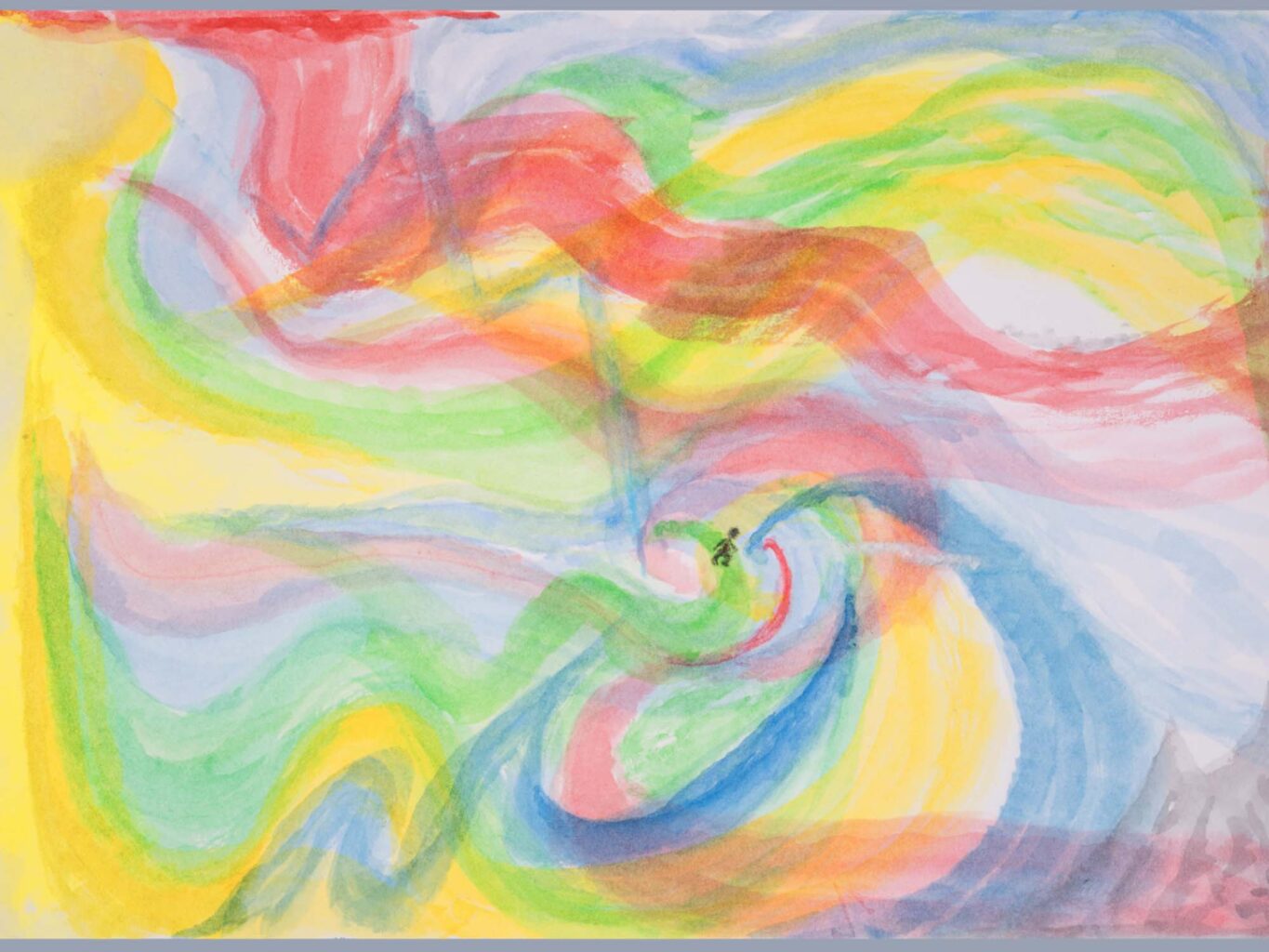
So, on July 6, 2022, I opened an account with Coinbase and held an empty wallet for my eventual use. At the same time, we established AnthroArts as a gallery or collection on OpenSea, using Ethereum to build into it whatever we could of our intentions. The collection can be found by typing https://opensea.io/collection/anthroarts into any web browser.
I had been painting and writing all along to maintain my sanity while all of this was transpiring and was more than ready to create an NFT or, as they say in crypto land, mint an NFT. I wanted these paintings to clearly point to the human soul, which is always involved in any artistic creation. It was important for these future NFTs to nurture a different relationship of what the soul is for the human being. In our time, I feared the soul was being challenged by so much of the sensory experience that we have in the world. In this collection, I wanted all the NFTs to reflect the creative soul at work in our lives.
I had the option with the titles and the NFT description to guide anyone viewing the collection in the hope that they would view these NFTs also with the eyes of the soul. I decided I would launch the entire collection with paintings and language that would leave no doubt about what and why I was doing this. The logo expresses that clearly and the descriptions are succinct and accurate. I had the option to elaborate on my description in ‹unlockable content,› which becomes viewable after someone buys an NFT.
Minting an NFT
Almost any file can be made into an NFT. Mine are mostly visual PNG files. One can mint an NFT of a song, bits of music, a short story told by a teacher, a teacher’s blackboard drawing, a chart, a therapeutic exercise, etc. All are potential material for an NFT. Most inhabitants of cryptoland tend to surf rapidly through the landscape. In that sense, my paintings demand more pondering, suggestive of a more meditative approach to visual experience.
I ended up finding an incredible photographic studio called Image Flow that was completely equipped with all the necessary paraphernalia and a professional and sensitive staff. For $35 each, they photographed all my eleven paintings, cropped, and made slight adjustments to each one to satisfy our artistic feelings and thoughts. My grandson made an investment in Photoshop and became an overnight expert to make further adjustments, such as different border colors, color intensity, and balance.
Creating an NFT never improves the quality of the material so it is very prudent to make sure that the material you start out with is of the highest possible quality. OpenSea maximum file size for minting is 100 megabytes. Since we had a choice, we selected PNG files rather than the more common JPG. With Photoshop, we narrowed each image down to 275 pixels per square inch with saturation set between 10 and 25 for most images. That seemed to do the trick for our multicolored, delicate, four-sided images. As you can see for yourself, the quality of the colors is not bad and we managed an acceptable degree of intensity and contrast without losing the overall harmony of color. Even zooming in on segments reveals interesting forms, movements, and interactions.
There are other options, but we decided for the present to make every NFT one-of-a-kind. Each painting is enclosed in a border of a different color. Even though there are ten ‹Born Again› NFTs they each have a uniquely colored border. Using Photoshop, my grandson and I took an exact sample color from the painting for the border color so the borders mimic the colors in the painting. This meant that we were merging the physical world with the digital to create one-of-a-kind NFTs.
That is as far as we have been able to journey. At this writing, there are about 100 unique NFTs in this collection of NFTs called AnthroArts. They are for viewing, buying, re-selling, and giving. I intend to give many to such Anthroposophical initiatives as have a wallet to receive them.
My sincerest wish is that these NFTs will circulate around the globe and be a kind of spiritual antidote or talisman to transform the soul diseases infecting the virtual atmosphere being breathed in by the elementals forced to suffer them. I leave the determination as to whether what I have done is good or evil to the judgment of the spirit of our time. After all, Michael is not so much interested in our good intentions as he is in the results of our deeds. He is a being of consequence, the living spirit of tough love.
Images from the Author’s NFT Project.




